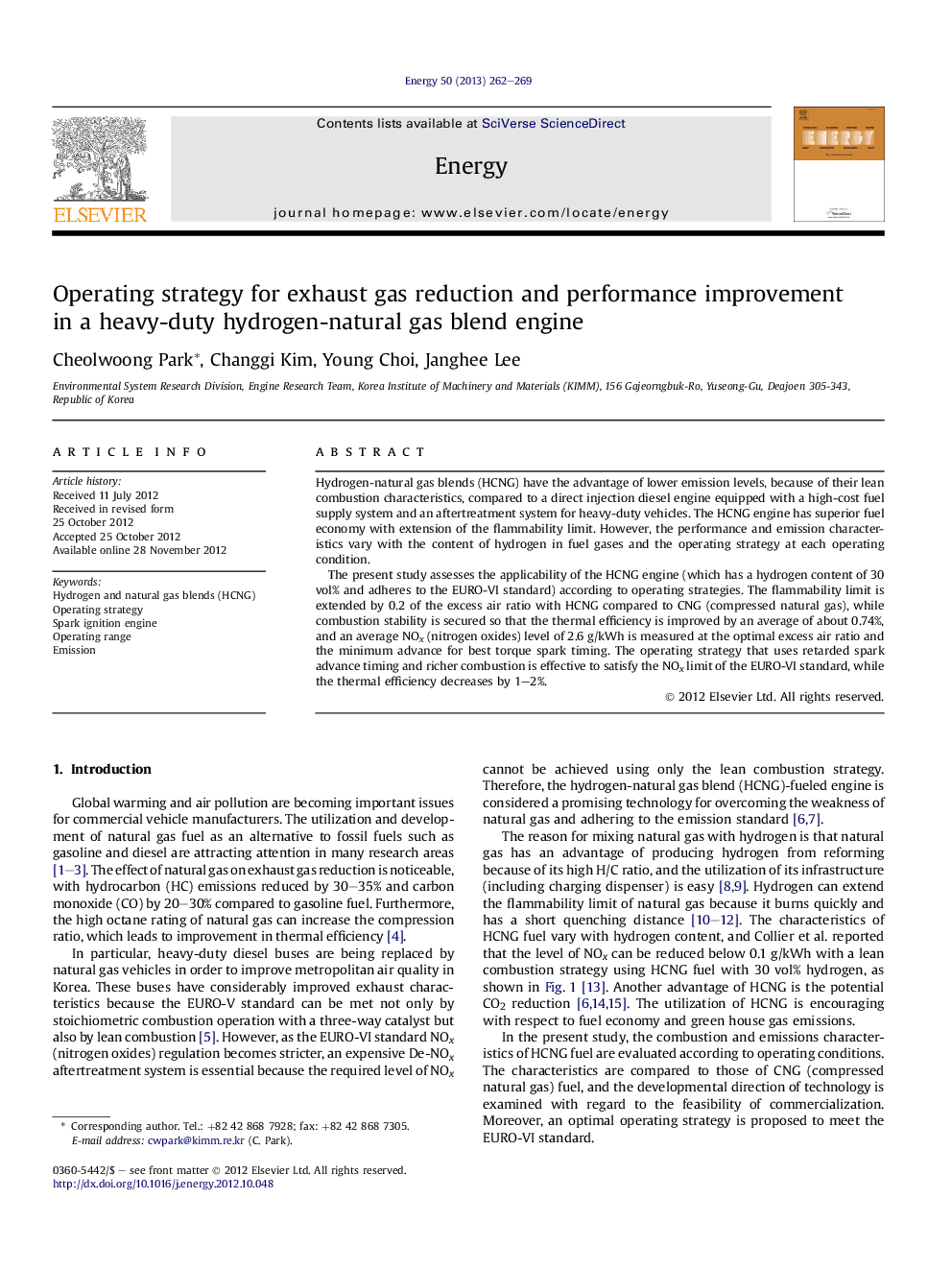| Article ID | Journal | Published Year | Pages | File Type |
|---|---|---|---|---|
| 1733237 | Energy | 2013 | 8 Pages |
Hydrogen-natural gas blends (HCNG) have the advantage of lower emission levels, because of their lean combustion characteristics, compared to a direct injection diesel engine equipped with a high-cost fuel supply system and an aftertreatment system for heavy-duty vehicles. The HCNG engine has superior fuel economy with extension of the flammability limit. However, the performance and emission characteristics vary with the content of hydrogen in fuel gases and the operating strategy at each operating condition.The present study assesses the applicability of the HCNG engine (which has a hydrogen content of 30 vol% and adheres to the EURO-VI standard) according to operating strategies. The flammability limit is extended by 0.2 of the excess air ratio with HCNG compared to CNG (compressed natural gas), while combustion stability is secured so that the thermal efficiency is improved by an average of about 0.74%, and an average NOx (nitrogen oxides) level of 2.6 g/kWh is measured at the optimal excess air ratio and the minimum advance for best torque spark timing. The operating strategy that uses retarded spark advance timing and richer combustion is effective to satisfy the NOx limit of the EURO-VI standard, while the thermal efficiency decreases by 1–2%.
► Thermal efficiency is improved with HCNG (hydrogen and natural gas blends) by an average of about 0.74% compared to CNG (compressed natural gas). ► 2.6 g/kWh of averaged NOx (nitrogen oxides) level is measured at optimal excess air ratio and MBT spark timing. ► Retarded spark timing with rich mixture is effective to satisfy the NOx limit of EURO-VI. ► Further reduction of CH4 emission should be achieved with improved oxidation catalyst.
